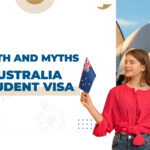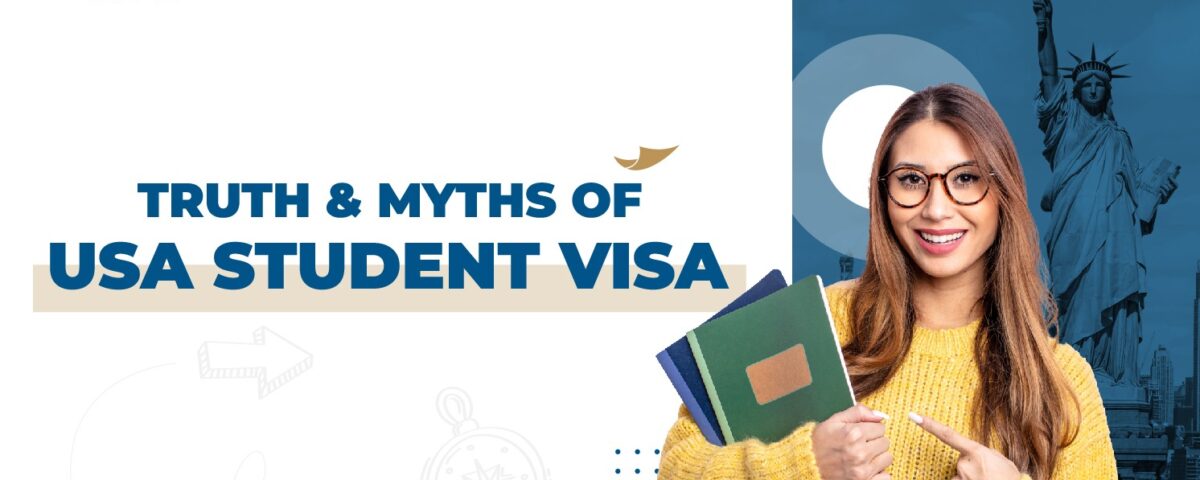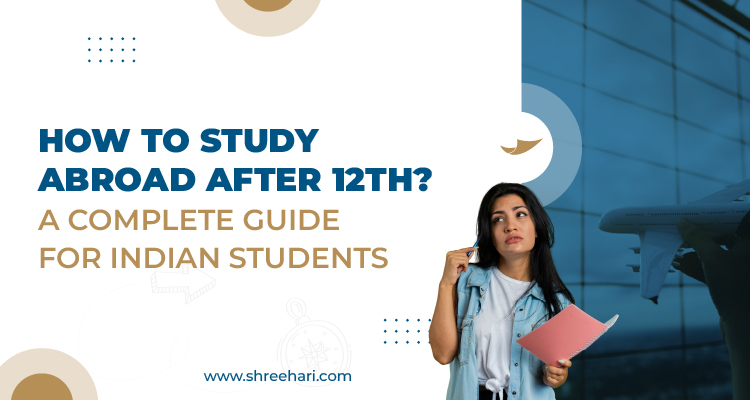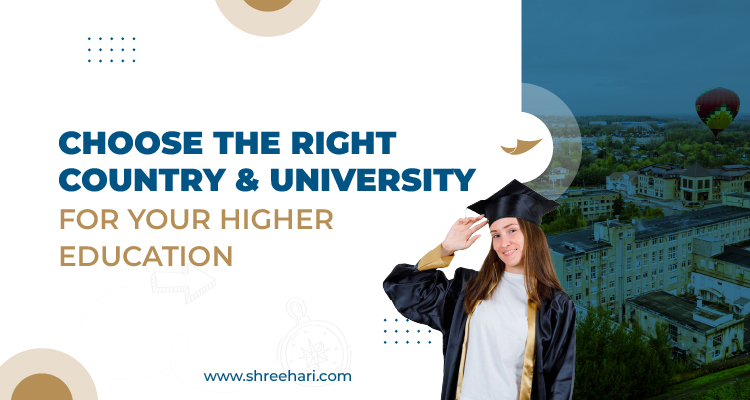
Top Courses to Study in Australia
June 22, 2023
Truth and Myths of Australia Student Visa
July 10, 2023Obtaining a student visa to study in USA is a dream for many international students. However, there are several myths and misconceptions surrounding the process. In this blog, Shreehari debunk common Truth and Myths of USA student visa. Understanding the facts will help prospective students make informed decisions and navigate the application process successfully.
Understanding the USA Student Visa
Before delving into the myths and truths, let’s first understand what a USA student visa entails. The student visa allows individuals from other countries to enter the United States for the purpose of pursuing academic or vocational studies at accredited institutions. There are different types of student visas based on the level of study and the type of institution.
Types of USA Student Visas
The two primary types of student visas are:
F-1 Visa: This visa is issued to students enrolled in academic programs at colleges, universities, high schools, private elementary schools, seminaries, conservatories, or language training programs.
J-1 Visa: This visa is for students participating in exchange programs that promote cultural exchange and mutual understanding.
Eligibility Criteria
To be eligible for a student visa, applicants must:
Have a valid admission offer from a U.S. educational institution.
Demonstrate the ability to cover the costs of education and living expenses.
Intend to return to their home country after completing their studies.
Meet health and character requirements.
Satisfy additional criteria specific to the chosen visa category.
Now that we have a basic understanding of the student visa, let’s address some common myths associated with it.
Myths & Truths
Myth: Student Visas are Difficult to Obtain
Truth: Clear Guidelines and Processes
One common misconception is that obtaining a student visa for the USA is a difficult and complex process. While it is true that the application process involves several steps, the guidelines provided by the U.S. Department of State are transparent and well-defined. By following the instructions carefully, preparing the required documents, and presenting a strong case, the chances of obtaining a student visa increase significantly.
Myth: Only Top Students Can Get a Visa
Truth: Focus on Academic Potential and Intentions
Contrary to popular belief, student visa approvals are not solely based on academic merit or being a top student. The U.S. immigration authorities evaluate the applicant’s academic potential, financial capacity, and intentions to ensure they are genuine students who intend to return to their home country upon completing their studies. While good academic performance can strengthen the application, it is not the sole determining factor.
Myth: Student Visa Applications Get Automatically Rejected
Truth: Proper Documentation and Preparation is Key
Some prospective students fear that their visa applications will be automatically rejected. However, the decision to approve or reject a student visa application depends on the applicant’s ability to satisfy the requirements and provide compelling evidence. Proper documentation, including proof of admission, financial resources, and strong ties to the home country, significantly improves the chances of a successful visa application.
Myth: The USA Has Stopped Issuing Student Visas
Truth: Continuation of Visa Programs
There have been rumors suggesting that the United States has stopped issuing student visas altogether. This is purely a myth. The U.S. government continues to welcome international students and acknowledges the positive impact they have on the country’s educational system and cultural diversity. The student visa programs are still active, allowing eligible students to pursue their educational goals in the USA.
Myth: Student Visas are Valid Indefinitely
Truth: Duration and Renewal Requirements
Student visas have specific durations depending on the program of study. The F-1 visa is typically valid for the duration of the academic program, while the J-1 visa may have a specific end date or be subject to program completion. It is essential to be aware of the visa expiration date and any renewal requirements to maintain legal status in the United States.
Myth: Student Visas Guarantee Employment
Truth: Student Visa and Work Opportunities
While it is possible to work in the United States on a student visa, it is important to note that the primary purpose of the visa is to pursue studies. F-1 visa holders can work on-campus part-time and may be eligible for off-campus employment under certain circumstances. J-1 visa holders can engage in work and training opportunities directly related to their program. However, employment is subject to restrictions and must not interfere with academic progress.
Myth: It is Easy to Overstay on a Student Visa
Truth: Importance of Compliance and Status Maintenance
Overstaying on a student visa is a serious violation of U.S. immigration laws. It is crucial to maintain compliance with the terms and conditions of the visa, including enrolling in a full-time course load, making satisfactory academic progress, and adhering to any employment restrictions. Failure to comply can result in negative consequences, such as being barred from reentering the United States.
Myth: Studying in the USA is Expensive for International Students
Truth: Financial Aid and Scholarship Opportunities
While studying in the United States can be costly, there are various financial aid options and scholarships available to international students. Many universities offer merit-based scholarships, need-based grants, and tuition waivers. Additionally, students can explore external scholarship programs, government-sponsored initiatives, and work-study opportunities to help offset the expenses associated with education in the USA.
Myth: Student Visas are Only for Traditional Academic Programs
Truth: Student Visa Options for Vocational and Language Courses
Student visas are not limited to traditional academic programs. Vocational and language courses also fall under the purview of student visas. The F-1 visa, in particular, accommodates a wide range of educational opportunities, including vocational training, English language programs, and non-degree courses. Students interested in pursuing non-traditional academic paths can still apply for a student visa and benefit from the enriching experience of studying in the United States.
Myth: Student Visa Holders Cannot Travel Outside the USA
Truth: Proper Planning and Documentation
Student visa holders can travel outside the United States during their program of study. However, it is crucial to plan ahead, ensure the visa remains valid for reentry, and carry the necessary documentation, such as the I-20 form and a valid passport. Reentry into the United States is subject to inspection by U.S. immigration officials, who determine if the student can continue their studies.
Myth: It is Impossible to Change Visa Status
Truth: Available Options for Changing Visa Categories
Sometimes, circumstances change, and a student may wish to pursue a different path or extend their stay in the United States beyond the duration of their student visa. While it is not guaranteed, there are available options to change visa status, such as transitioning to a work visa, a tourist visa, or pursuing further studies. It is essential to consult with an immigration attorney or seek guidance from the appropriate authorities to explore the available options.
Myth: Student Visas Lead to Permanent Residency
Truth: Separate Pathways for Immigration
While studying in the United States can be a stepping stone towards permanent residency, student visas do not directly guarantee a pathway to obtaining a green card or permanent residency status. There are separate immigration programs and processes for individuals interested in permanently residing in the United States. Students considering long-term plans should explore these avenues independently and understand the requirements and eligibility criteria.
Conclusion
The truth about USA student visas dispels many common myths and misconceptions that can deter prospective international students. Understanding the facts helps students make informed decisions and navigate the application process with confidence. The United States continues to welcome international students and recognizes the significant contributions they make to its academic and cultural landscape. By following the guidelines, preparing the necessary documentation, and maintaining compliance, students can fulfill their aspirations of studying in the USA.
FAQs (Frequently Asked Questions)
Q1: Can I work part-time while studying on a student visa?
Yes, F-1 visa holders are typically allowed to work part-time on-campus. However, there may be restrictions on the number of hours worked per week. Off-campus employment opportunities may be available under certain circumstances, such as economic hardship or approved internships.
Q2: How long does it take to process a student visa application?
The processing time for a student visa application can vary depending on the U.S. embassy or consulate where the application is submitted. It is advisable to apply well in advance to allow sufficient time for processing, especially during peak application seasons.
Q3: Can I apply for a student visa without having an acceptance letter from a university?
Generally, a valid admission offer from a U.S. educational institution is a requirement for applying for a student visa. The acceptance letter demonstrates that the applicant has been accepted into a recognized program of study.
Q4: What happens if my student visa application gets rejected?
If your student visa application gets rejected, it is essential to review the reasons for rejection provided by the consular officer. You may have the option to reapply or address any issues that led to the rejection. Seeking guidance from an immigration attorney or consulting with the educational institution can help navigate the next steps.
Q5: Is it possible to bring my family with me on a student visa?
Dependent family members, such as spouses and unmarried children under the age of 21, may be eligible to accompany or join a student visa holder in the United States. The process involves obtaining the appropriate dependent visas, such as the F-2 or J-2 visas, and providing supporting documentation to demonstrate the relationship with the student visa holder.



